The Similarities and Differences of Civilian Competition and Combat Shooting
The Similarities and Differences of Civilian Competition and Combat Shooting
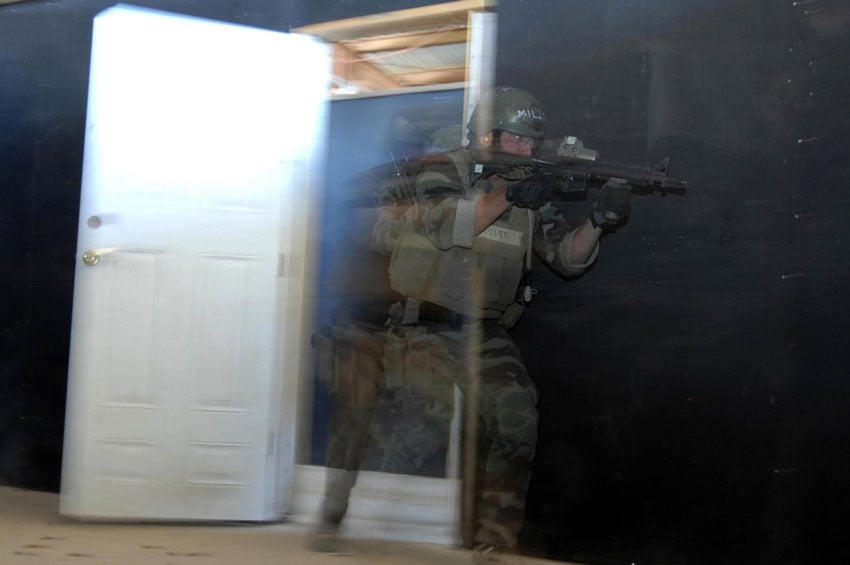
Editor-in-Chief’s Note: Please join us in welcoming former Marine, Navy SEAL and DEVGRU Operator Craig Sawyer as a contributor on ITS Tactical.
The main parallels I see between combat shooting and competition shooting are that in each case, you need to be able to put your shots on a given target in a timely manner. Both disciplines can involve shooting, moving, reloading and problem solving.
Other than those similarities, the two scenarios are worlds apart. One of the main points to consider in combat shooting is that your life is in immediate jeopardy. Someone is trying to kill you. This is simply never the case in civilian competition shooting. In my mind, that’s far and away the largest factor to consider.
Shooting Stress
In a life and death fight, the stresses on the shooter can be extreme, depending on his background, level of training, mental prep and actual combat experience. One thing I’ve noticed about my own reactions to sudden, violent confrontation over the years is the lack of significant increase in heart rate. Looking back on my own experiences growing up as a fighter, I clearly remember getting a massive adrenaline rush and an elevated heart rate to the point that my fighting actually became less effective with the physiological symptoms that come with an extreme elevation in heart rate.
Over the years, with more and more exposure to violence, I found myself much more calm under these conditions and making much sharper decisions; fighting more effectively. The same dynamic applies to fighting with weapons as well. There’s no difference in physiological effect. A shooter who gets too amped is still likely to experience auditory exclusion, loss of dexterity, tunnel vision, repetitive tendencies and lack of mental clarity. All these things are detrimental in a modern firefight.
Because there is no sudden, inter-human violent confrontation, civilian competition shooting simply is unlikely to present such stress on the shooter. If the shooter experiences this level of stress shooting in a civilian sporting competition, I’d have serious concerns about his ability to perform to any degree, whatsoever, in a real life and death confrontation. Conversely, just because someone has performed well in combat, that doesn’t mean they will necessarily do well against experienced competition shooters in their environment. Someone who trains extensively for perfect conditions will absolutely become very good in those conditions. We all adapt to the stimulus we’re challenged with most often.
Combat Shooting
In combat, at least the Spec-Ops combat most of us are familiar with these days, the considerations of the shooter are many. The first glaring difference, after the fact that his life is in danger, is that it’s not all about him. He has specific responsibilities which are part of a coordinated effort. Let’s face it, in a Spec-Ops unit, we’re not worried about getting shot so much as we’re worried about failing to cover our sector or clear our zone, which would get one of our teammates, our brothers; shot. In a tactical unit, we are together when we can’t be alone. The effectiveness of our unit is far greater than the mere sum of its parts. In single-man civilian shooting competitions, there is no such consideration.
Another aspect of combat shooting is cover. The combat shooter must consider that he is a target and must make effective use of cover and concealment whenever possible. In such an environment, the shooter has to take into account how he is perceived by his opponent(s) as he moves through the fight. If a civilian shooter is not behind a flimsy plywood barricade, there is no harm. If a combat shooter fails to make effective use of actual cover from the specific weapon his opponent is firing at him, he can be injured, killed, or get others in his unit killed. This is a severe penalty that cannot be replicated in the sport of civilian competition.
I could go on and on with the differences, but those are the first that occur to me. I could easily add the fact that many combat engagements throughout history have been at close-in distance to face-to-face proximity, resulting in hand-to-hand fighting to some degree. It isn’t for the feint of heart. The use of grenades, booby traps, IED’s, the many aspects of mastering various forms of comms, night vision gear, lasers, illuminators, the various methods of fire support, insertion, extraction platforms, working with the dogs, intel assets, emergency medical/trauma procedures, the heavy gear necessary to pull all this off, the physical training necessary to be an effective member of such a fighting force and many more considerations all play a part in the overall scheme of a modern day combat scenario. So in many cases, the shooting might very well be the LEAST of the considerations a combat “shooter” must weigh out at any one moment in time.
Tools of the Trade
The last point I’ll make is on the tools of the trade. Civilian shooters love their tricked out 1911 race guns, which work so smoothly on the range when perfectly clean and lubed, with just the right ammo. I’ve owned and shot some nice ones. Impressive, to say the least. So smooth, they shoot “like buttuh!”
In combat, however, such a “princess” gun is a liability that cannot be tolerated. In my experiences with the Spec-Ops world and as an advanced tactical instructor, I’ve seen more malfunctions from other units’ fancy 1911’s than any other weapon, period. I’ve seen them fail in JSOC demonstrations to Congress. I’ve seen them fail on the ranges, with sights falling off, failures to feed, eject, etc.
Heck, I’ve even come back off SEAL missions with rounds spun backwards in my SIG magazine. Why? A little sand and salt bound up the magazine follower, preventing upward pressure on the rounds. Once the first couple rounds are fired, there’s no more pressure and the rounds can tumble front to back. NOT what you want when you reach for your backup in combat.
With a weapon that’s finely-tuned with very tight tolerances and geared for downloaded ammo, there just seems to be a far greater incidence of malfunction, especially with the introduction of any foreign material like a bit of sand, carbon, lack of lube, etc. This is unacceptable in a weapon that must be counted on for survival. In combat, the weapon MUST fire, period.
Accounting for Murphy
Murphy’s Law demands that when you need your sidearm, you’ll happen to be in a fight for your life that’s so pressing, your primary has already gone down or gone dry and there is no time to correct it. Now you’re down to your pistol.
Are you hit? Where? Your primary hand? Are you bloody now? How banged up are you? Helo crash? How many are coming for you? How close are they? How many of your teammates are hit? What is your position relative to your teammates? Do you need to continue to move to continue covering them as you press forward your assault? Do you need to sprint to get into position? Are you winded? Night vision focused, or splattered with anything? Are you covered in bile, spinal fluid, feces, dirt from blasts, hydraulic fluid, dust in your eyes, night blind by a blast you didn’t expect? Wearing a gas mask, sucking wind like a lung shot buffalo? Heart rate screaming? NOW shoot your civilian race gun with your bloody weak hand!
Make sure to get a perfect grip, because that grip safety won’t negotiate. Get it perfect, or it doesn’t shoot. Great thought, huh? Oh, and don’t forget to flip that lever with your numb and bloody weak hand before you shoot, or you’re DEAD! Oh, and keep that lever from flipping up while you’re fighting for your life, because if it does, you die! Don’t forget to change those single-stack mags twice as often with that one hand, because those thin single stacks don’t last but a couple seconds in a violent confrontation.
Wrap-up
I know, you’re cursing me for pointing out that the “Princess” guns are not as cool as we all thought, especially after forking out a few grand for a big name brand. Well, some of those are the ones I’m talking about. Whatever a combat shooter chooses, it should be, above all, simple and RELIABLE under adverse conditions. Why? Simple. Inter-human conflict is an inherently imperfect scenario. A flawed arrangement. Struggle is awkward, ugly, far from glamorous and rarely goes according to anyone’s perfect plan. A complicated and finicky sidearm is the last thing an operator needs to have to worry about when it’s all down to that. This is of course just my take.
I have quite a bit more to add about the positive aspects of competitive shooting, which are many. I can already say those points will include that it’s FUN and that it definitely improves your shooting. No doubt about it. I’ll post more on all that soon.
Rage on! ~SAW
Editor-in-Chief’s Note: Please join us in welcoming former Marine, Navy SEAL and DEVGRU Operator Craig Sawyer as a contributor on ITS Tactical. You can read Craig’s full and extensive biography on his Website tacticalinsider.com and catch him as an “expert” on this season’s Top Shot on the History Channel.






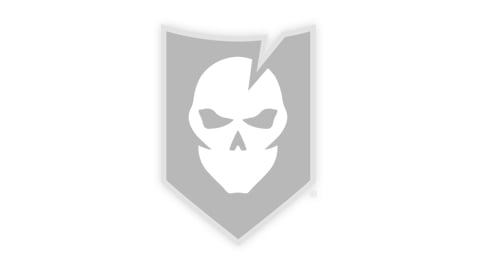
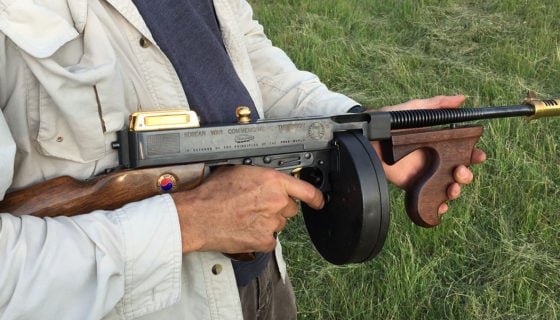
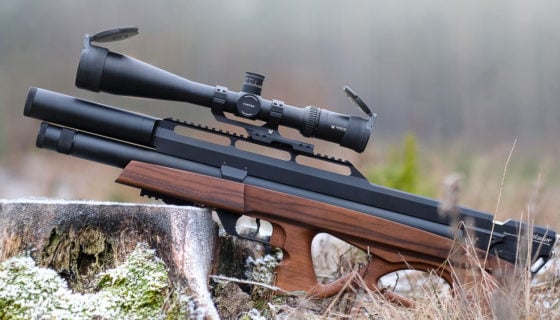
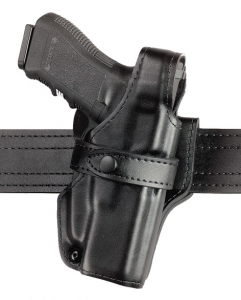

Discussion